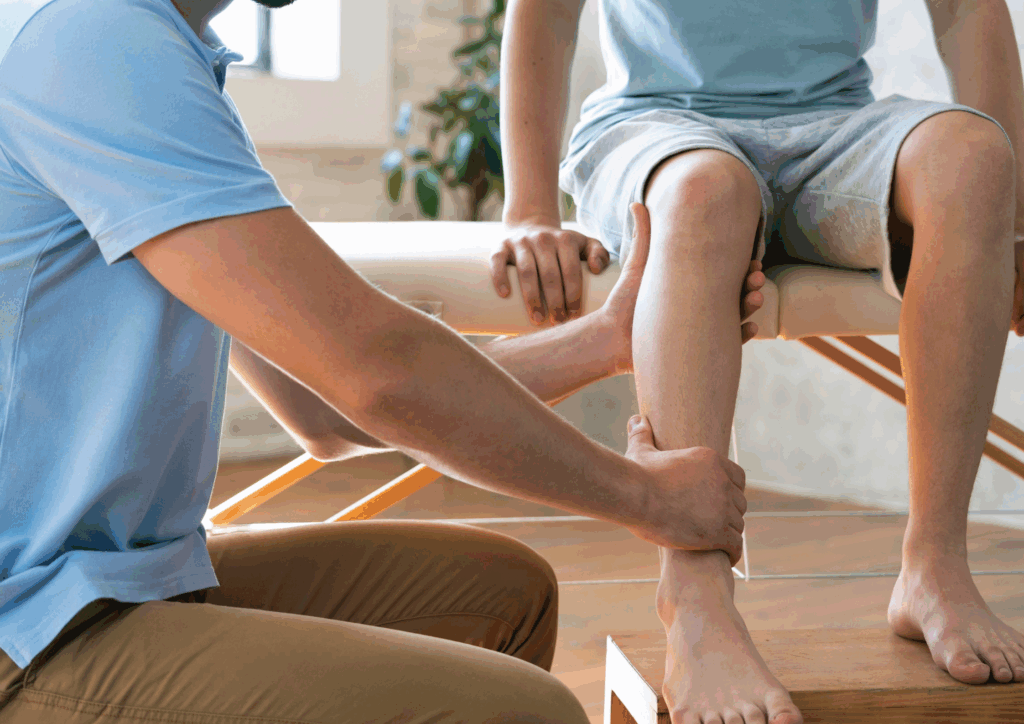Introduction
Knee pain can stop you from doing the things you love — whether that’s exercising, gardening, or simply walking around your neighborhood. But not all knee pain is the same. Two of the most common causes we see at Central Ohio Spine & Joint in Westerville, Ohio are arthritis and meniscus or ligament tears. While they can feel similar, the way we diagnose and treat them is very different.
In this article, we’ll explain the key differences between arthritic knee pain and a tear, what symptoms to look for, and how we help patients get back to pain-free movement.
What is Arthritic Knee Pain?
Arthritis — often called “wear and tear” arthritis or osteoarthritis — happens when the smooth cartilage that cushions your knee joint gradually breaks down.
Common signs of arthritic knee pain include:
- Stiffness in the morning or after sitting
- Pain that worsens with long activity but eases with gentle movement
- Swelling or mild warmth around the joint
- Grinding, popping, or clicking sounds
Arthritic knee pain is often chronic and progressive, meaning it builds slowly over time.
What is a Knee Tear?
A tear usually refers to the meniscus (cartilage pad inside the knee) or a ligament (like the ACL or MCL). Tears are often the result of an injury or sudden movement.
Common signs of a knee tear include:
- Sudden sharp pain during activity
- Swelling that develops within 24–48 hours of injury
- A “popping” sound or sensation at the time of injury
- Locking, catching, or giving way of the knee
- Localized pain on one side of the knee joint
Unlike arthritis, a tear is usually acute (sudden onset) and may occur during sports, exercise, or even daily activities like twisting while walking.

Arthritis vs. Tear: Key Differences
| Feature | Arthritic Knee Pain | Knee Tear (Meniscus/Ligament) |
| Onset | Gradual, worsens over months/years | Sudden, often during activity |
| Pain Type | Achy, stiff, worse in morning or after sitting | Sharp, stabbing, localized |
| Swelling | Mild, comes and goes | Moderate to severe, often immediate |
| Function | Limited by stiffness and fatigue | Locking, catching, or instability |
| Sounds | Grinding/clicking | Pop at injury |
Diagnosis at COSJ
At Central Ohio Spine & Joint, we use a comprehensive approach to determine the exact cause of your knee pain:
- History & Exam: Identifying onset, pattern, and associated symptoms.
- Functional Testing: Movement screens to see how the knee performs under load.
- Diagnostic Scans: Including our $49 shockwave diagnostic scan when appropriate to identify tissue damage.
Accurate diagnosis ensures you get the right treatment plan from the start.
Treatment Options in Westerville
- For Arthritis: Conservative management with chiropractic adjustments, mobility therapy, shockwave therapy to stimulate joint health, and progressive strength training.
- For Tears: Depending on severity, options include rehab, corrective exercise, dry needling, and in some cases, referral for orthopedic consultation if surgery is needed.
Our goal is always to help you avoid unnecessary procedures whenever possible.
FAQs: Arthritis vs. Tear
Can arthritis and a tear happen together?
Yes. Some patients have both, especially if a tear accelerates wear on the joint.
Do I always need an MRI for a tear?
Not always. Many tears can be diagnosed with a clinical exam, but imaging may be recommended for severe cases.
Can shockwave therapy help both arthritis and tears?
Yes. Shockwave is especially effective for tendon/joint pain and stimulating tissue healing.
Unsure if your knee pain is arthritis or a tear? Don’t guess — get a proper diagnosis and plan that works.
📍 Central Ohio Spine & Joint
768 Park Meadow Rd.
Westerville, Ohio 43081
📞 (614) 392-2730
👉 Schedule your $49 diagnostic scan today and find out what’s behind your knee pain.

Recent Comments